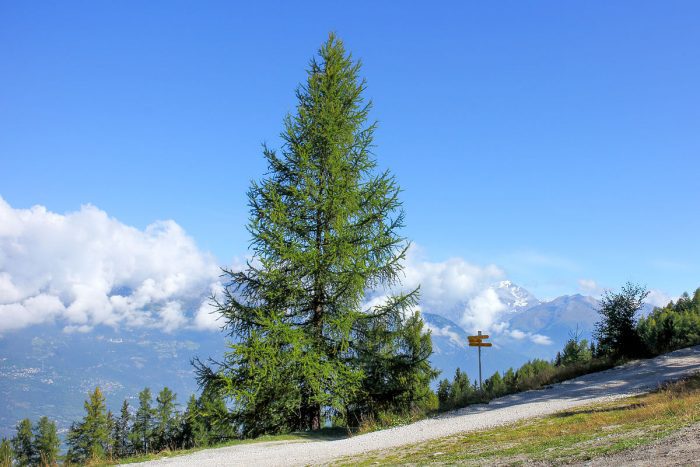Larix, a genus first described in 1754 by Philip Miller (1691-1771) is commonly known as larch, as well as mélèze, mélèze laricin in the French language; as lärche in German; as larice in Italian; as ЛиÑтвенница (listvenitsa) in Russian; as カラマツ (karamatsu) in Japanese, and as 轊¶æ¾Š±ž in Chinese. It is a member of the Pinaceae family.

Larches are deciduous coniferous trees that grow to heights of 80 to 180 feet (20 to 45 m) tall and are native to much of the cooler temperate northern hemisphere, on lowlands in the north and high on mountains further south. They are among the dominant plants in the immense boreal forests of Russia and Canada.
Although a conifer, the larch is a deciduous tree and loses its leaves in the autumn. The shoots are dimorphic, with growth divided into long shoots typically 4 to 20 inches (10 - 50 cm) long, bearing several buds, and short shoots only 0.04 to 0.08 inch (1 - 2 mm) long with only a single bud. The leaves are needle-like, 0.8 to 2 inches (2 - 5 cm) long and slender under 0.04 inch (1 mm) wide. They are borne singly, spirally arranged on the long shoots, and in dense clusters of 20 to 50 needles on the short shoots. The needles turn yellow and fall in the late autumn, leaving the trees leafless through the winter.
Larch seed cones are erect and small, 0.4 to 3.6 inches (1 - 9 cm) long, green or purple in color when young, ripening brown 5 to 8 months after pollination. In about half the species the bract scales are long and visible, and in the others, short and hidden between the cone scales. Those native to northern regions have small cones 0.4 to 1.2 inches (1-3 cm) long with short bracts, while the more southerly species tend to have longer cones 1.2 to 3.6 inches (3 - 9 cm) long, often with exserted bracts, with the longest cones and bracts produced by the southernmost species, in the Himalayan mountains.
There are 10 to 15 species that are not accepted as distinct species by all authorities. In the past, the cone bract length was often used to divide the larches into two sections (section Larix with short bracts, and section Multiserialis with long bracts), but genetic evidence does not support this division, pointing instead to a genetic divide between Old World and New World species, with the cone and bract size being merely adaptations to climatic conditions. More recent genetic studies have proposed three groups within the genus, with a primary division into North American and Eurasian species, and a secondary division of the Eurasian into northern short-bracted species and southern long-bracted species; there is some dispute over the position of Larix sibirica, a short-bracted species which is placed in the short-bracted group by some of the studies and the long-bracted group by others.